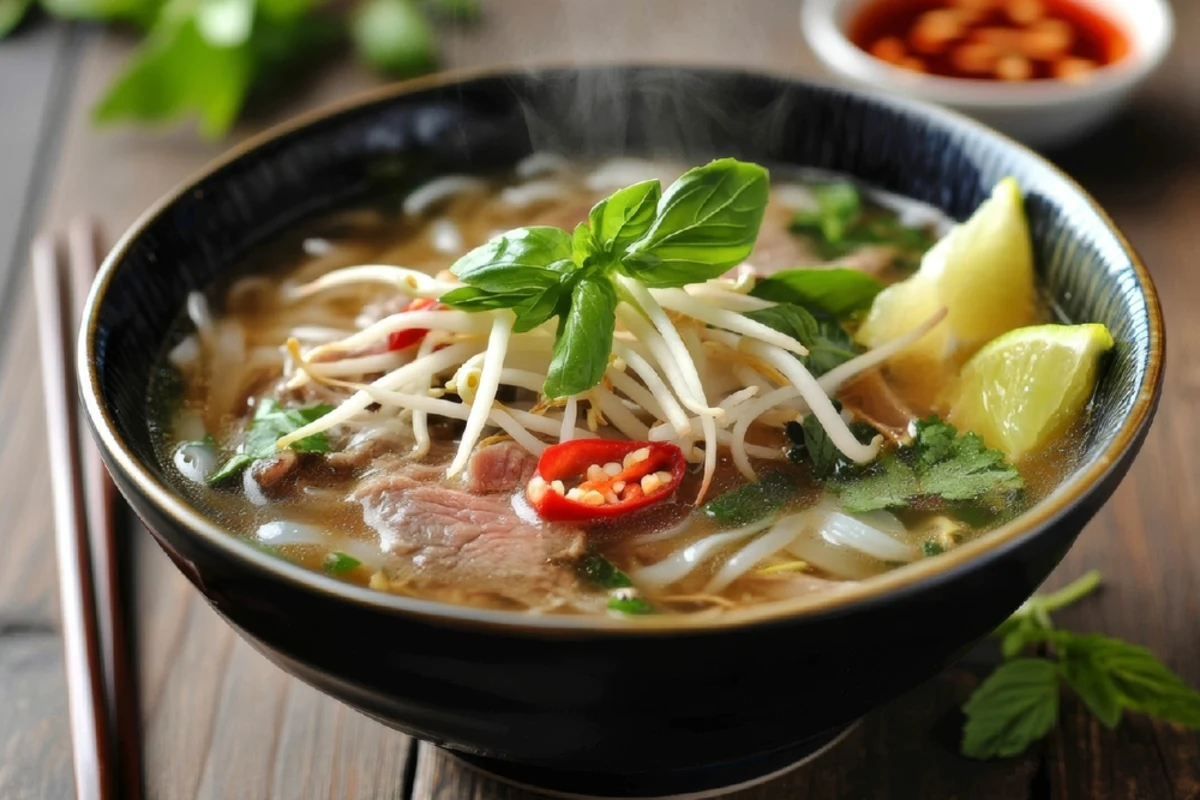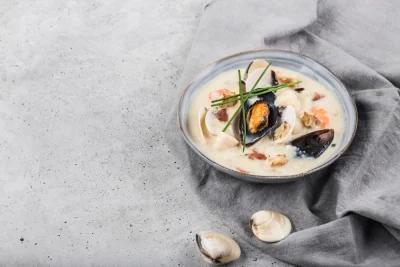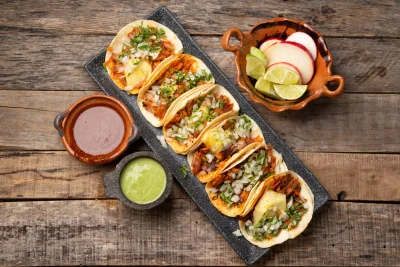
The Ultimate Pho Recipe Guide: Authentic Flavors & Best Wine Pairings
Introduction
Few dishes inspire as much devotion as a steaming bowl of pho. This iconic Vietnamese noodle soup has captivated food lovers across the United States with its rich, aromatic broth, tender slices of beef, and fresh, vibrant garnishes. Whether you're a seasoned home cook or just starting your culinary journey, mastering a great pho recipe opens the door to endless comfort—and countless opportunities for creative wine pairing. If you’ve ever wondered what wine goes with pho, or how to elevate your next bowl with the perfect glass, you’re in the right place. Let’s explore the world of pho, discover the secrets behind an authentic pho recipe, and uncover the best wine recommendations for every palate.
About This Dish
Pho (pronounced ‘fuh’) is more than a meal—it’s a cultural experience, a symbol of Vietnamese cuisine, and a comfort food staple for many Americans. Its origins trace back to early 20th-century northern Vietnam, where street vendors crafted this hearty soup for busy workers. Over time, pho has evolved, incorporating regional influences and local ingredients as it spread throughout Vietnam and, eventually, across the globe.
What makes pho so special? It’s the harmonious blend of umami-rich broth, lightly chewy rice noodles, and fresh herbs, all balanced by a squeeze of lime and a kick of chili. The ritual of assembling your own bowl—selecting garnishes, adjusting spices—turns every meal into a personalized experience. In the United States, pho restaurants and home cooks alike have embraced this tradition, adapting the dish to suit local tastes and available ingredients. Yet, the essence remains unchanged: a soothing, deeply flavorful soup that brings people together.
For wine lovers, pho offers an intriguing challenge. Its complex flavors—spicy, aromatic, savory, and bright—call for thoughtful wine pairing. Whether you prefer a classic beef pho recipe, a lighter chicken pho recipe, or a speedy instant pot version, there’s a wine to match every bowl. Through Vinomat, you can easily discover wine recommendations tailored to your favorite pho recipes and local wine shops.
Key Ingredients & Their Role
To craft a truly authentic pho recipe, every ingredient must be chosen with care. Let’s break down the essentials and explore how they influence both flavor and wine pairing potential:
- Rice Noodles: Soft, slippery, and slightly chewy, rice noodles are the foundation of any pho recipe. They absorb the broth, adding body and texture without overwhelming the palate. Their neutral flavor makes them an ideal backdrop for both robust reds and aromatic whites.
- Beef (Sirloin or Ribeye): Thinly sliced beef cooks gently in the hot broth, resulting in tender morsels that melt in your mouth. The beef’s umami richness anchors the dish, suggesting wines with moderate tannin and good acidity—think Pinot Noir or light-bodied reds.
- Coriander (Cilantro): Fresh coriander adds herbal brightness and a hint of citrus. This green note can clash with heavily oaked wines but shines alongside crisp, aromatic whites or lighter reds.
- Beef Stock: The soul of pho, a deeply flavored beef stock infused with spices, sets the stage. Its savory depth (umami) calls for wines that can stand up to intensity but won’t overpower the delicate aromatics.
- Aromatics (Ginger, Onion): Charred ginger and onion are simmered with the broth, lending sweetness, warmth, and complexity. Their subtle spice works well with wines that have a bit of earthiness or floral notes.
- Spices (Star Anise, Cinnamon, Cloves): These classic pho spices infuse the broth with exotic, almost sweet undertones. Star anise especially brings licorice notes, which pair nicely with wines featuring similar spice tones (Syrah, Gewürztraminer, or certain Pinot Noirs).
- Fish Sauce & Sugar: Fish sauce adds salty, umami-laden depth, while sugar balances the broth. Look for wines with fresh acidity to cut through richness, and a touch of fruit to complement the sweet-savory profile.
- Fresh Garnishes (Bean Sprouts, Thai Basil, Red Chili, Lime): These toppings add crunch, herbal lift, heat, and brightness. The interplay of fresh and spicy notes means your wine should be refreshing, not heavy or oaky.
Each ingredient plays a vital role in the dish’s harmony. When thinking about wine pairing, consider the dominant flavors: umami, herbal, spicy, and sour. Wines that balance these qualities—without overpowering the subtlety of the broth—will always shine with pho.
Recipe
Ingredients:
- 200g Rice noodles
- 400g Beef (sirloin or ribeye, thinly sliced)
- 1/2 cup Coriander (fresh, chopped)
- 2 liters Beef stock (or 2 beef stock cubes and 2 liters water)
- 1 large Yellow onion
- 5cm piece, sliced Fresh ginger
- 3 pieces Star anise
- 1 Cinnamon stick
- 4 pieces Cloves
- 2 tbsp Fish sauce
- 1 tbsp Sugar
- 2 stalks Spring onions (sliced)
- 1 cup Bean sprouts (fresh, for garnish)
- 1/4 cup Thai basil (fresh, for garnish)
- 2 pieces Red chili (sliced, for garnish)
- 2 pieces Lime (cut into wedges, for garnish)
Instructions:
- Prep all ingredients. Thinly slice the beef against the grain. Peel and slice the ginger. Peel and quarter the onion. Chop the coriander and slice the spring onions, chili, and lime.
- In a large pot, bring 2 liters of beef stock (or water with beef stock cubes) to a simmer. Add the ginger, onion, star anise, cinnamon stick, and cloves into the pot.
- Simmer the broth on low heat for at least 90 minutes to allow the flavors to develop. Skim any impurities from the surface periodically.
- After the broth has simmered, strain the liquid to remove the solids. Return the clear broth to the pot and season it with fish sauce and sugar.
- While the broth simmers, cook the rice noodles according to the package instructions. Drain and rinse with cold water to stop the cooking process. Set aside.
- Bring the strained broth back to a gentle boil. Place the thinly sliced beef in a single layer in serving bowls.
- Ladle the hot broth over the beef in the bowls to gently cook the meat. Add the cooked rice noodles into the bowls.
- Top each bowl with bean sprouts, chopped coriander, spring onions, Thai basil, and sliced chili. Serve with lime wedges for an optional squeeze of fresh citrus.
- Serve hot and enjoy your flavorful pho with your desired garnishes and toppings.
Nutrition Facts (per serving):
- Calories: 450 kcal
- Protein: 30.0g
- Fat: 15.0g
- Carbohydrates: 45.0g
- Salt: 2.5g
Dietary Information: Gluten-free, Dairy-free, Nut-free
Perfect Wine Pairings
Wine pairing with pho is all about balance—finding bottles that enhance the dish without overwhelming its subtlety. While traditional Vietnamese dining rarely includes wine, the rise of wine culture in the United States means more people are discovering just how magical the right wine match can be.
What to Look for in a Wine for Pho
- Acidity: A crisp wine will refresh your palate and cut through the broth’s richness.
- Low to Moderate Tannins: High tannins can clash with the soup’s herbal and spicy notes. Look for lighter reds and aromatic whites.
- Aromatic Complexity: Wines with floral, herbal, or spice notes echo pho’s signature flavors.
- Versatility: Since pho allows for customization with garnishes and sauces, a flexible wine is key.
Top Wine Recommendations
Additional Options
- Rosé (California, Provence): Crisp, refreshing, and food-friendly, rosé is an excellent choice when you want something chilled and versatile.
- Unoaked Chardonnay (Sonoma, Burgundy): Clean, mineral-driven whites can highlight the soup’s aromatic spices.
Why These Wines Work
- Pinot Noir from Oregon or Sonoma brings just enough structure to handle beef, but its lively acidity and subtle earthiness won’t overpower the fresh herbs and spices.
- Gamay (Beaujolais) is famously food-friendly—its red fruit and floral notes echo the brightness of coriander and Thai basil.
- Gewürztraminer’s floral bouquet and gentle sweetness tame the heat from chili and complement the broth’s star anise and ginger.
- Dry Riesling is a sommelier’s secret weapon: its high acidity and hint of fruit balance the soup’s umami and lime.
All these wines are widely available in the United States at Total Wine, Trader Joe’s, BevMo, and local wine shops. Most options fall comfortably within the $15–$30 range, making it easy to elevate your next pho night without breaking the bank. For personalized wine recommendations, Vinomat can help you discover even more perfect pairings tailored to your taste and local stores.
Cooking Tips & Techniques
A delicious pho recipe is all about patience, technique, and attention to detail. Here’s how to ensure your pho is restaurant-worthy every time:
- Char Your Aromatics: To unlock deep, sweet flavors, toast or broil your onion and ginger until nicely charred before adding them to the broth. This step adds complexity and color.
- Simmer, Don’t Boil: Keep the broth at a gentle simmer to extract flavors without making it cloudy. Skim impurities regularly for a clear, clean-tasting soup.
- Strain Thoroughly: After simmering, strain the broth through a fine mesh sieve to remove all solids and achieve crystal clarity.
- Slice Beef Thin: For the best texture, slice beef against the grain as thinly as possible. Partially freezing the meat makes this easier.
- Noodles Al Dente: Don’t overcook your rice noodles. Rinse with cold water after boiling to stop the cooking process and prevent sticking.
- Season to Taste: Fish sauce and sugar are essential for balance—add gradually and taste as you go.
- Customize Your Bowl: Let diners add their favorite garnishes—bean sprouts, Thai basil, chili, lime—to personalize each serving.
- Shortcut? Try Instant Pot: For a "cheap instant pot pho recipes" approach, use a pressure cooker to cut down simmering time while still extracting flavor. Just be sure to strain and season carefully.
Common mistakes include overboiling the broth (which can make it cloudy), skipping the char on aromatics, or slicing beef too thick. Take your time with each step, and your pho will reward you with depth and clarity.
Serving Suggestions
Serving pho is as much about presentation as it is about taste. Here’s how to create an authentic and memorable dining experience:
- Assemble at the Table: Ladle hot broth over thin beef and noodles in each diner’s bowl, then let everyone customize with garnishes. The aroma and steam set the stage for a sensory feast.
- Accompaniments: Offer small plates of bean sprouts, Thai basil, cilantro, sliced chili, and lime wedges for everyone to add as they wish. Hoisin sauce and sriracha are optional for extra flavor.
- Wine Service: Pour wine into smaller glasses to keep it cool and fresh. Offer a couple of options, such as Pinot Noir and dry Riesling, so guests can experiment with pairings.
- Setting: Serve pho in wide, deep bowls with chopsticks and soup spoons for authenticity. Add a simple salad or Vietnamese spring rolls to start.
- Atmosphere: Play soft music, light a few candles, and let the meal unfold at a relaxed pace. Pho is meant to be savored—both as food and as an experience.
Conclusion
A great pho recipe is more than a set of instructions—it’s an invitation to connect with tradition, savor bold flavors, and discover new wine pairings. Whether you’re exploring an authentic pho recipe, trying a chicken pho recipe (pho ga recipe), or seeking the best wine for your next bowl, the joy is in the journey. Use Vinomat to find the perfect bottle from your local shop, and transform every pho night into a celebration of taste. Happy cooking, happy sipping, and cheers to your next unforgettable pho and wine experience!


